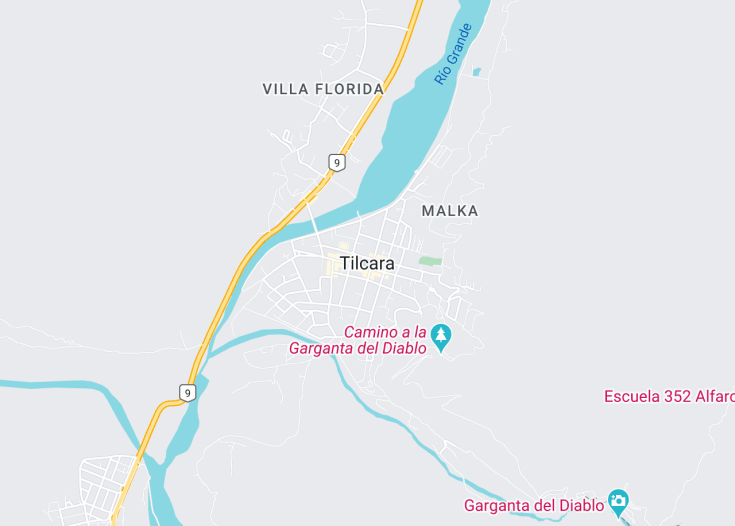Nestled in the heart of the Quebrada de Humahuaca, a UNESCO World Heritage site in Argentina, Tilcara beckons with its rich indigenous heritage and stunning natural landscapes. This picturesque village is steeped in history, exemplified by the pre-Inca fortress, Pucará de Tilcara, and its vibrant cultural celebrations like the annual Carnival. Visitors are drawn not only to its archaeological sites but also to its local crafts markets and culinary offerings, which deeply reflect the Andean traditions unique to this region.
When visiting Tilcara, ensure to experience the sunrise from the Pucará de Tilcara, offering a majestic view of the valley illuminated in golden hues.
Travelers should consider timing their visit to coincide with Tilcara’s Carnival, where the fusion of local folklore and lively festivities provides an unforgettable experience.
Tilcara: A Journey Through Time and Tradition
| Country | Argentina |
| Time in Tilcara | GMT-3 |
| Language spoken | Spanish |
| Population | 5,640 (INDEC 2010) |
| Currency | Argentine Peso (ARS $) |
| Airports |
|
Tilcara, nestled in the heart of the Quebrada de Humahuaca in Jujuy Province, Argentina, offers a mesmerizing blend of ancient cultures and breathtaking landscapes. Known for its rich indigenous heritage and stunning geological formations, the town is a gateway to exploring pre-Incan ruins and vibrant local traditions. The rustic charm of Tilcara, with its cobbled streets and quaint adobe homes, invites travelers into a world suspended in time. The town’s central feature, the Pucará de Tilcara, is a fortification built by the Omaguaca tribe, offering insights into pre-Columbian defenses and providing panoramic views of the valley. Each year, Tilcara throbs with life during the Carnival, a festivity filled with color, music, and communal spirit, reflecting the syncretism between indigenous customs and Spanish influences. The local market, offering artisanal crafts, pottery, and woven textiles, provides a taste of the artistic skills that have been passed down through generations. As night falls, the starlit sky and the silhouettes of the hills create an enchanting ambiance, making Tilcara not just a place to visit, but a profound experience to be felt.
Where is Tilcara?
Tilcara is situated in the northwest of Argentina, within the Jujuy Province, amid the expansive Andes mountain range.
Distances:
| Route | Distance by car | Time by car |
|---|---|---|
| Buenos Aires to Tilcara | 1,037 mi | Approx. 17 hrs |
| Cordoba to Tilcara | 592 mi | Approx. 10 hrs |
| Salta to Tilcara | 123 mi | Approx. 2.5 hrs |
What is Tilcara famous for?
Tilcara is renowned for its Pucará, an ancient fortress that exhibits the ingenuity of pre-Incan architecture. It’s also famous for its vibrant cultural festivals, particularly the Carnival of Tilcara, which showcases a fusion of indigenous and colonial traditions.
History
Pre-Columbian Period
The region around Tilcara has been inhabited by indigenous peoples for over 10,000 years, as evident from the archaeological findings in the Pucará de Tilcara, a fortification built by the Omaguaca tribe. These early inhabitants were adept at agriculture and livestock herding, developing sophisticated irrigation systems and terracing techniques to sustain their communities in the arid environment.
1535-1600: Spanish Conquest and Colonial Times
The arrival of Spanish conquistadors in the 16th century marked a turbulent period for Tilcara and its indigenous inhabitants. During the conquest and subsequent colonial era, the region came under Spanish rule, which introduced new cultural elements and governance structures, including Christianity and European-style administration. The indigenous populations were significantly impacted, facing challenges such as forced labor and loss of their traditional lands.
1810-1825: War of Independence
Tilcara played a role in the Argentine War of Independence. The region’s strategic location made it pivotal in conflicts between Spanish forces and revolutionary troops. Local indigenous groups, some of whom aligned with the independence fighters, contributed to the liberation struggles that eventually led to the establishment of an independent Argentina.
20th Century to Present
Through the 20th century, Tilcara gradually evolved into a cultural hub, preserving its rich history and indigenous heritage. The establishment of archaeological sites like the Pucará de Tilcara became significant in boosting local tourism. Today, Tilcara stands as a vibrant testament to its diverse historical layers, combining ancient traditions with modern influences and serving as a significant tourist destination in Jujuy Province.
Visit Tilcara
What to see and do in Tilcara, Argentina
Tilcara, nestled in the heart of the Quebrada de Humahuaca, offers travelers a mix of natural beauty, historical sites, and cultural experiences. Key attractions include:
- The Pucará de Tilcara, a pre-Incan fortress offering an insight into the ancient Omaguaca way of life.
- The Archaeological Museum, displaying artifacts and exhibits related to the region’s history.
- Garganta del Diablo, a stunning canyon perfect for hiking and nature walks.
- The vibrant Mercado Artesanal, where local artisans sell handmade crafts, textiles, and jewelry.
Additionally, visitors can engage in trekking, exploring the colorful landscape of the Quebrada de Humahuaca.
Cultural Festivals in Tilcara
Tilcara is renowned for its lively festivals, particularly the Carnival of Tilcara, held annually in February. This event sees the town burst into vibrant colors and festivity, showcasing traditional music, dance, and customs that reflect the rich cultural heritage of the region.
Best time to visit Tilcara
The optimal time to visit Tilcara is during the dry season from April to November. During these months, the weather is mild and ideal for outdoor activities and exploring the town’s historical sites without the hindrance of rain.
Is Tilcara worth visiting?
Undoubtedly, Tilcara is worth visiting for its unique blend of cultural history, natural beauty, and vibrant local traditions. Whether exploring ancient ruins, enjoying the local cuisine, or participating in colorful festivals, Tilcara offers a glimpse into the soul of Argentina’s Andean heritage, making it a must-visit for those seeking both adventure and cultural enrichment.









